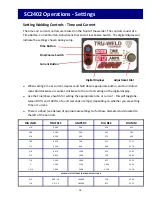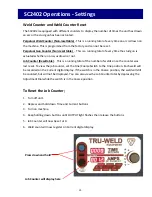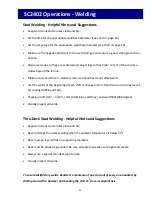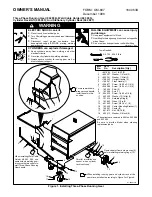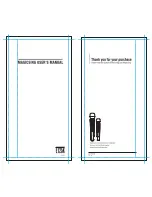
7
Stud
Welding
Safety
Precautions
WELDING
SPARKS
Heat
from
flames
and
arcs
can
start
fires.
Hot
slag
or
sparks
can
also
cause
fires
and
explosions.
Remove
all
combustible
materials
from
the
work
area
or
cover
these
materials
with
a
protective
non
‐
flammable
tarp.
Combustible
materials
include
wood,
fabrics,
sawdust,
liquid
and
gas
fuels,
solvents,
paints
and
coatings,
paper,
etc.
Hot
sparks
or
hot
metal
can
fall
through
cracks
or
crevices
in
floors
or
wall
openings
and
cause
a
hidden
smoldering
fire.
Make
certain
that
such
openings
are
protected
from
hot
sparks
and
metal.
ELECTRIC
and
MAGNETIC
FIELDS
Electric
current
flowing
through
any
conductor
causes
localized
Electro
‐
Magnetic
Fields
(EMF).
Welding
and
cutting
current
creates
EMF
around
welding
cables
and
welding
machines.
♦
Operators
having
pacemakers
should
consult
their
physician
before
welding.
EMF
may
interfere
with
some
type
of
pacemakers.
♦
Exposure
to
EMF
may
have
other
health
effects,
which
are
unknown.
♦
Operators
should
use
the
following
procedures
to
minimize
exposure
to
EMF:
♦
Route
the
work
cables
together.
Secure
them
with
electrical
tape
when
possible.
♦
Never
coil
the
work
cable
around
any
part
of
your
body.
♦
Do
not
place
your
body
between
the
work
cables.
Route
cables
on
the
same
side
of
your
body.
♦
Connect
the
work
cable
to
the
work
piece
as
close
as
possible
to
the
area
being
welded.
♦
Keep
welding
power
source
and
cables
as
far
away
from
your
body
as
possible.
♦
Electromagnetic
fields
can
irrevocable
erase
magnetic
data
carriers
(computer
memory,
credit
cards,
security
ID
cards
or
data
storage
diskettes).
♦
Electromagnetic
fields
may
magnetize
and
damage
watches
or
similar
digital
devices.
PROTECT
YOURSELF
and
OTHERS!
Some
welding,
cutting,
and
gouging
processes
are
noisy
and
require
ear
protection.
The
arc,
like
the
sun,
emits
ultraviolet
(UV)
and
other
radiation
and
may
injure
skin
and
eyes.
Hot
metal
can
cause
burns.
Training
in
the
proper
use
of
welding
processes
and
equipment
is
essential
to
prevent
accidents.
♦
Always
wear
safety
glasses
with
side
shields
in
any
work
area.
In
conjunction
with
eye
protection,
welding
hel
‐
mets
or
face
shields
are
also
required.
♦
Use
a
face
shield
fitted
with
the
correct
filter
cover
plates
to
protect
your
eyes,
face,
neck,
and
ears
from
sparks
and
rays
of
the
arc
when
operating
or
observing
operations.
Warn
bystanders
not
to
watch
the
arc
and
not
to
expose
themselves
to
the
rays
of
the
electric
arc
or
hot
metal.
♦
Wear
flameproof
type
gloves,
heavy
long
‐
sleeve
shirt,
cuff
less
trousers,
and
a
welding
helmet
or
cap
for
hair
pro
‐
tection,
to
protect
against
arc
rays
and
hot
sparks
or
hot
metal.
A
flameproof
apron
may
also
be
desirable
as
pro
‐
tection
against
radiated
heat
and
sparks.
♦
Hot
sparks
or
metal
can
lodge
in
rolled
up
sleeves,
trouser
cuffs,
or
pockets.
Sleeves
and
collars
should
be
kept
buttoned,
and
open
pockets
eliminated
from
the
front
of
clothing.


















